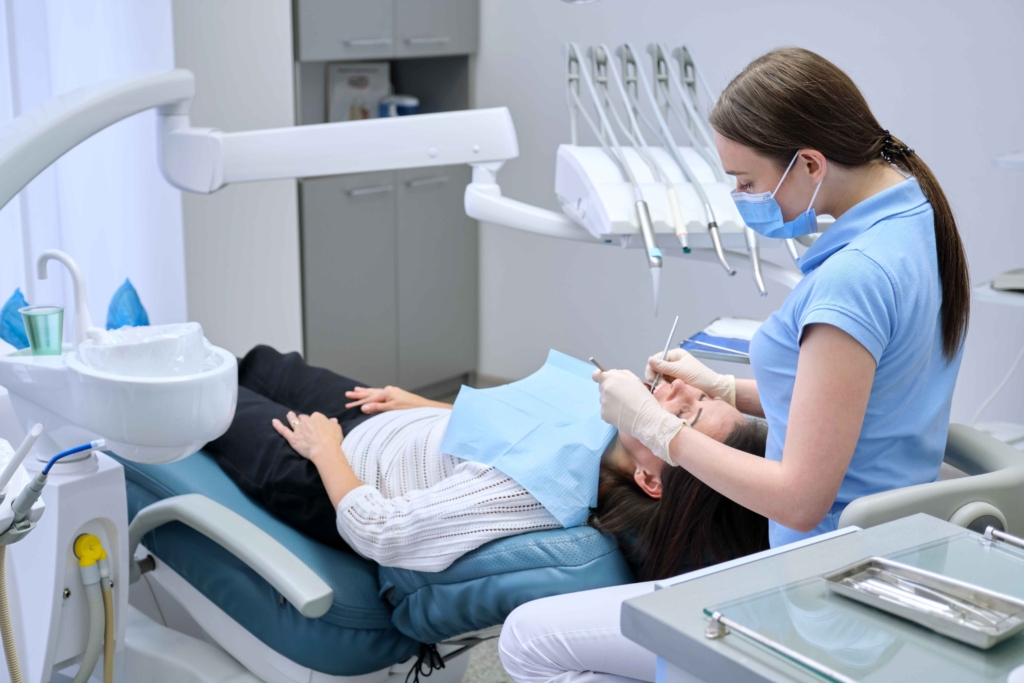
The dental landscape is constantly evolving, with new technologies emerging to improve patient care. Gone are the days of clunky X-ray machines and uncomfortable impressions. Today’s dental offices are equipped with sophisticated tools that make treatments more efficient, accurate, and comfortable. Whether you’re looking for a smoother cleaning experience or a minimally invasive cavity treatment, these advancements have something to offer everyone.
Let’s delve into some of the most recent dental technologies that are revolutionizing the industry in 2024:
1. 3D Printing: From Imagination to Implantation
3D printing has become a game-changer in dentistry. Imagine a world where custom-made implants, crowns, and bridges can be created precisely to fit your unique anatomy. This is the reality with 3D printing technology. Dentists can take digital scans of your mouth and use them to design 3D models of the required restorations. These models are then sent to specialized printers that create the restorations with high accuracy and precision. The benefits of 3D printing are numerous:
- Improved Fit and Function: Custom-made restorations fit significantly better than traditional options, leading to improved functionality, comfort, and aesthetics.
- Reduced Treatment Time: 3D printing allows for faster turnaround times, potentially reducing the number of appointments needed.
- Enhanced Predictability: Dentists can visualize the final restoration before it’s even created, leading to more predictable outcomes.
2. Digital Dentistry: A Streamlined Experience
Digital dentistry encompasses a range of technologies that are transforming the dental workflow. Here are some key players:
- Intraoral Scanners: Say goodbye to the uncomfortable and messy experience of traditional dental impressions. Intraoral scanners are handheld devices that use a wand or camera to create digital 3D models of your teeth and gums. This eliminates the need for gooey trays and provides a more comfortable and efficient experience.
- CAD/CAM Technology: Computer-aided design/computer-aided manufacturing (CAD/CAM) technology works hand-in-hand with intraoral scanners. The digital models created by the scanner are used to design restorations on a computer. These designs are then sent to milling machines (CAM) that create the restorations with incredible precision from durable materials.
- Digital X-Rays: Digital X-rays offer a significant leap forward compared to traditional X-rays. They provide high-resolution images with significantly lower radiation exposure. Additionally, digital images can be viewed instantly on a computer screen, allowing for faster diagnosis and treatment planning.
3. Artificial Intelligence: The Future of Dental Care
Artificial intelligence (AI) is making inroads into the dental field, offering exciting possibilities for improved diagnostics and treatment planning. Here’s how AI is impacting dentistry:
- Early Cavity Detection: AI algorithms can analyze digital X-rays and intraoral scans to detect cavities in their earliest stages, even in areas that might be missed by the human eye. This allows for early intervention and prevents the need for more invasive procedures later.
- Personalized Treatment Plans: AI can analyze patient data, including medical history, X-rays, and scans, to help dentists create personalized treatment plans tailored to each patient’s unique needs.
- Risk Assessment: AI can be used to assess a patient’s risk for developing certain dental conditions, such as gum disease or oral cancer. This allows for preventive measures to be taken proactively.
4. Laser Dentistry: A Gentle Touch
Laser technology is finding increasing use in various dental procedures. Lasers offer a minimally invasive and often more comfortable alternative to traditional methods. Here are some applications of laser dentistry:
- Gum Treatment: Lasers can be used to remove diseased gum tissue in patients with gum disease. This can be a more precise and less painful option compared to traditional scalpel surgery.
- Frenectomy: A frenectomy is a minor procedure to remove a frenum, a small piece of tissue that can restrict tongue movement. Lasers can perform this procedure with minimal bleeding and faster healing times.
- Teeth Whitening: Laser technology can be used to accelerate teeth whitening treatments, offering faster and potentially more effective results.
5. Teledentistry: Convenience at Your Fingertips
Teledentistry leverages the power of telecommunication technology to provide remote dental care. This can be particularly beneficial for patients in rural areas or those with limited mobility. Some common applications of teledentistry include:
- Virtual Consultations: Patients can have initial consultations or follow-up appointments with their dentist virtually through secure video conferencing platforms.
- Post-Operative Care: Teledentistry allows dentists to remotely monitor patients’ healing progress after procedures and address any concerns they may have.
- Dental Education: Teledentistry can be used for educational purposes, allowing dentists to provide patients with information about oral hygiene.
Como Lake Village Dental Centre is always exploring new and improved ways to provide you with the best dental care in Coquitlam. Contact our office today to book an appointment.